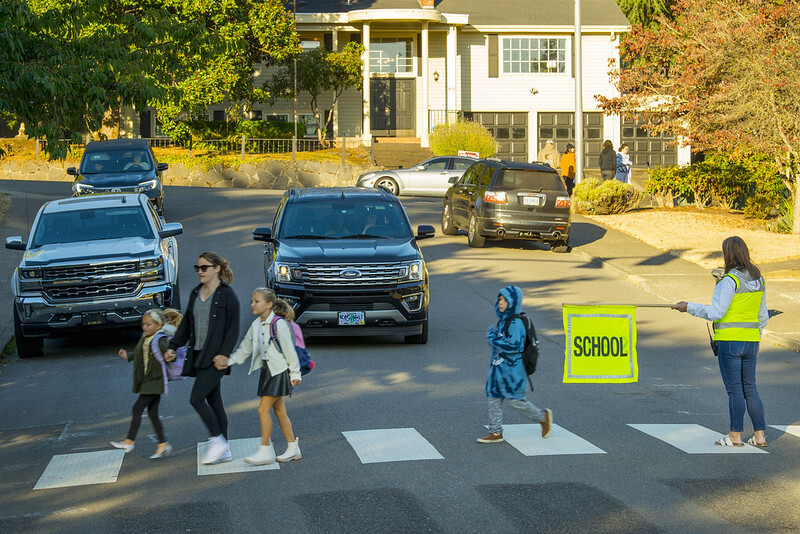Back to School - Share the Road Safely

As summer winds down, it is time to settle into the fall, back-to-school routine. With school back in session, kids are walking, riding and rolling to school.
Drivers should remember to:
- Plan ahead and give yourself extra time to commute. With more traffic, and people on the roads, it's likely your drive time may take a little longer than it did during the summer.
- Slow down; especially in neighborhoods and school zones where more vulnerable road users are present.
- Stay alert and avoid distractions. Kids can be unpredictable when walking and biking to school.
- Watch out for kids who may unexpectedly step out from in-between parked cars.
- Always obey traffic signals, crossing guards, and school bus flashing lights.
- Yield at both marked and unmarked crosswalks and stop for pedestrians who are preparing to cross.
For more information about safe driving and sharing the road with young pedestrians, bicyclists and school buses, visit the National Safety Council Back to School Sharing the Road webpage. For information about how to get to school safely, visit the Oregon Safe Routes to School webpage.
Pedestrian Safety - Oregonians Stand Out

Oregonians Stand Out - Full Size PDF
As the season changes from summer to fall, it is now dark later in the morning and getting dark earlier in the evening. Remember to look out for people walking, riding and rolling. Most pedestrian fatalities occur at dusk or at night when visibility is low.
Help prevent these tragedies by following these tips:
As a driver:
- Be extra vigilant at dusk - it's harder to see pedestrians.
- Watch out for pedestrians at corners and mid-block marked, or unmarked crosswalks.
- Slow down and look for movement in the dark.
As a pedestrian:
- Avoid wearing dark clothing that blends into your surroundings.
- Wear bright colors during the day and light, or reflective gear at night.
- Carry a flashlight or use a headlamp when it's dark, rainy. foggy or cloudy.
- Together, we can make Oregon's streets safer for everyone.
Check out our safe driving pedestrian PSA:
English /
Spanish
Safety Belts - Buckle Up Every Time.

Somebody Loves You - Buckle up, Every time billboard - Full Size PDF